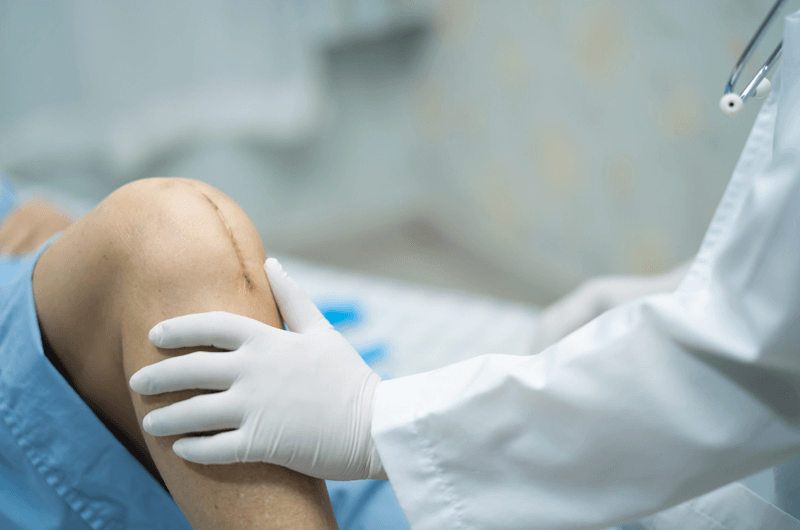Orthopedic surgeons frequently remove fracture fixation devices or implants. There are many options for operative fracture treatment, which has advanced with development of new and custom metal implants. Orthopedic implants are manufactured from titanium alloys and stainless steel. After fracture union, the implant is no longer needed and this has made orthopedic implant removal a frequently performed procedure. As any experienced medical coding service provider knows, reporting orthopedic implant removal can cause confusion as it depends on whether the removal is “superficial” or “deep”.
CPT 20680 vs. CPT 20670
The CPT codes for removal of implant are:
20680 – Removal of implant; deep (e.g., buried wire, pin, screw, metal band, nail, rod or plate)
20670 – Removal of implant; superficial (e.g., buried wire, pin or rod) (separate procedure)
- CPT 20680 – Deep implant removal procedures
According to the CPT codebook, 20680 should be reported for:- Removal of hardware from proximal radius, other than radial head prosthesis;
- Removal of hardware from distal humerus or proximal ulna, other than humeral or ulnar prosthesis; or
- Removal of hardware, other than humeral and/or glenoid prosthesis.
- Deep pin removal procedures (20680) should be used where the physician makes an incision overlying the site of the implant, dissects deeply to visualize the implant (which is usually below the muscle level and within bone), and removes the implant from the bone using instruments. The incision is repaired in multiple layers using sutures, staples, etc.
- CPT 20670 – Superficial implant removal procedures
Superficial pin or K-wire removals that do not require a layered closure (such as K-wire removals) are billed with code 20670. A 2014 AAPC describes situations when 20670 should be reported:- For a procedure performed in the physician’s office such as when the physician makes a small incision and removes the implant by pulling or unscrewing it. The incision is closed using sutures and/or steri-strips, but there is no layered closure.
- As it is a designated separate procedure, 20670 should be reported only if it is the only procedure performed at a particular anatomic area/operative site. If the physician performs the service with another procedure involving the same area, 20670 cannot be billed separately.
Superficial implant removal procedures can be performed in the physician office.
Reporting Removal of Hardware from Ankles, Hands and Elbow
There are different codes for orthopedic procedures that involve removal of hardware from the ankles, hands and elbow:
CPT 27704 – Removal of Ankle Implant
CPT 26320 – Removal of Finger or Hand Implant
CPT codes 24160-24164 – Removal of Implant from the Elbow or Radial Head
These three CPT codes are used for an involved/extensive procedure. In all of the above-mentioned cases, if only one or two screws are removed and it is not an extensive procedure, CPT 20670 or 20680 should be used as appropriate.
Reporting Multiple Units of Hardware Removal
According to AMA’s CPT Assistant (June 2009), reporting the removal of hardware CPT codes multiple times is indicated only when fixation device(s) are removed from separate fractures at different anatomical sites or for two fractures that are considered noncontiguous on the same bone (such as a proximal and distal fracture site).
Example: CPT 20680 and 20680-59 may be reported for a bimalleolar fracture when screw(s) are removed from the lateral malleolus (distal fibula) and then a plate with screws are removed from the medial malleolus (tibia) through a separate incision.
In the above example, reporting multiple units of hardware removal is appropriate as the removal is from two different fracture sites.
On the other hand, it would be incorrect to report 20680 twice when an intramedullary rod (IM rod) is removed. Removal of the IM rod cannot be done through one incision as there are locking screws on both ends of the rod. Stab incisions are made at two sites to release the screws but this is still regarded as a single implant system for fixation of one fracture site. Therefore, in this case, CPT code 20680 should be reported only once.
Summing up, the code descriptors for CPT codes 20670 and 20680 do not define the unit of service. Reporting one unit of service for all implants removed from an anatomic site is allowed. This single unit of service includes the removal of all screws, rods, plates, wires, etc., from the anatomic site whether through one or more surgical incisions. CMS allows reporting of an additional unit of service only if implant(s) are removed from a distinct and separate anatomic site.
Coding of many surgical procedures is fairly uncomplicated but some are fraught with complexities. Upcoding/undercoding of orthopedic implant procedures can lead to loss of revenue and extended processes, and also attract audits and investigations. Partnering with an orthopedics medical coding company is a practical option to avoid such issues and ensure accurate clams submission for maximum reimbursement.




